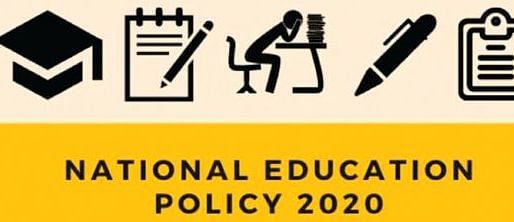For a long, higher education has been considered one of the most powerful levers for socio-economic development. It has also been deemed responsible for up-skilling the human resource and infusing among them the novelty.
‘We have witnessed that the demands and requirements of our society are rapidly changing, which has a long-lasting impact on academia & industry. As a result, the relationship between higher education and the industry is being relooked, remodelled and reshaped. Indian higher education is working tirelessly to meet the new challenges of un-skilling, re-skilling and up-skilling its human resource. A need has also been felt for a strong bond between academia and the industry.
NEP-2020 has envisaged focusing on skill-based education; the academia has realised that they must keep themselves up to date with industrial trends more than ever. As a result, society has witnessed that institutions of higher learning are now very receptive to building a reshaped partnership and collaboration with the industry, which is a welcome change. Such a partnership has opened new doors to getting further sponsorship for academic research.
The speedy augmentation in industry-academia relationships indicates enormous benefits that an industry can get through the partnership with an institution of higher learning, and it is very imperative for industry to explore a comprehensive relationship model for the engagement with academia because a long-term engagement helps to avoid prolonged debate for each research venture and remain associated with early-stage researches.
The collaboration between the two also helps exchange research material, publications and educational resources between the workforce, students & researchers. It also allows for academic support to the organisation for updating their required knowledge and skills among talented human resource.
It is high time for academia to develop a hybrid partnership model to get additional sponsorship for research from the industry, as research grants are not now easily available.
This initiative shall give more opportunities to institutions of higher learning to access additional resources needed for their research and expand their research areas. In return, the industry will also get timely constructive feedback and guidance on products and innovations, which will help in making significant improvements in meeting the demands of the modern society.
There is a well-established fact that institutions of higher learning are the main endowment pipelines for the industry. However, a question arises why do students of present times fail to adjust themselves to the industry set-up after graduating from higher education institutions? To my understanding, the answer is that these graduates are unaware with the current and futuristic demands and lack the required knowledge, skills and exposure.
Thus, to ensure our higher education set-up is connected to contemporary market needs, it is crucial that the two organisations come on the same page.
Considering the present trends, it is crucial for academia to develop an entrepreneurial mindset among students through which they can exploit their capabilities more industriously and diligently.
Developing such a mindset will automatically give them the practical know-how by which they will be able to identify the market gaps and address them through their critical, research-based and innovative ways, which will also help them catch the attention of investors and employers.gh
The collaboration between academia and industry also helps the institutions to expose their students to real-time industrial training and jobs. Since students have had time to adjust to the industrial culture, most students who successfully complete their internship in any industry get appointed there after they complete their education.
This human resource then becomes a powerful tool to develop stronger bond between the two organisations. Collaboration with the industry helps academia explore new opportunities to get aptitude and talent from a diverse pool of young and skilled graduates.
Society has seen those researchers whose research outcomes have had tremendous potential to revolutionise society.
Unfortunately, due to lack of collaboration between the two organisations, they could not expose and utilise their research outcome in the market, which could have benefited society, and with a result they have ended up showcasing such research in their drawing rooms only. Thus, building linkages between academia and industry becomes significant, encompassing infinite advantages for both organisations.
The linkages between industry and the academia are always win-win for both organisations. The industry benefits by getting the best, talented, exposed, skilled and refined human resources needed for a better outcome, and the institution gains expanded structures to experiment where the best ideas germinate and materialise.
The institution also gets patronage to find out the challenges our society is facing and to explore the vibrant mechanism to deal with them. It helps the institution to absorb its graduates in the industry. It also dramatically boosts the economy through knowledge commercialisation and educational commodification. However, the challenge is to make the most of the partnership as we move from one level to the next.
For a booming collaboration, both organisations should arrange a space for more dialogue to focus on developing further understanding to assess the benefits for each side.
Academia can prolifically convince the industry to supply those graduates who are the experts and skilled to fulfill their job market needs. Besides, the institution can help the industry identify problems and offer academically sourced and research-based solutions.
Similarly, the industry can help by offering realistic and handy exposure to the interns so that they get adjusted to the industry or become successful entrepreneurs.
DR. MOHAMMAD SAYID BHAT is a Sr. Assistant Professor at Central University of Kashmir.
Disclaimer: The views and opinions expressed in this article are the personal opinions of the author.
The facts, analysis, assumptions and perspective appearing in the article do not reflect the views of GK.






